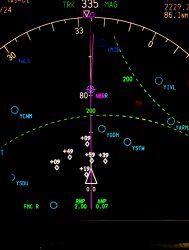jb747
Enthusiast
- Joined
- Mar 9, 2010
- Posts
- 13,517
Does that mean you got the chance to fly RNP approaches too? They are great to fly and the accuracy is unbelievable.
Interestingly enough the 777 only got approved about a month ago to fly RNPs and we had been doing them for years.
We flew the RNAV STARs, and then they had to join some form of approach for finals, so that's not quite the same thing. We could do GLS autolands though. From what I understand, an RNP approach would integrate both STAR and approach phases into one item, with the aircraft in APP mode for the entire event. We couldn't do that.
Looking at a Jeppesen...we could do the GNSS but not the RNP.
Last edited:















